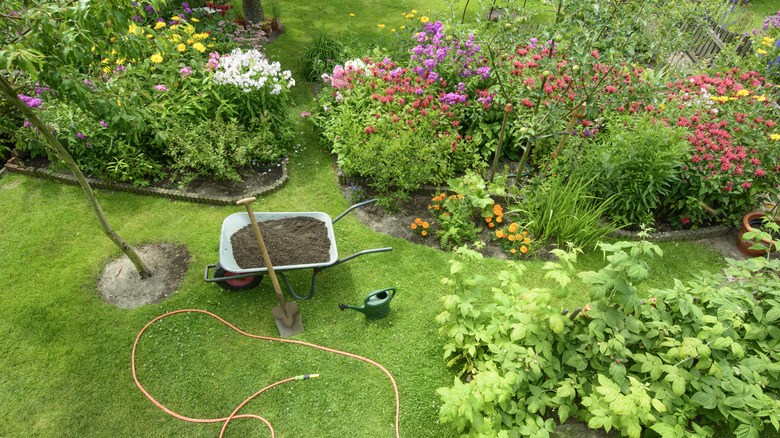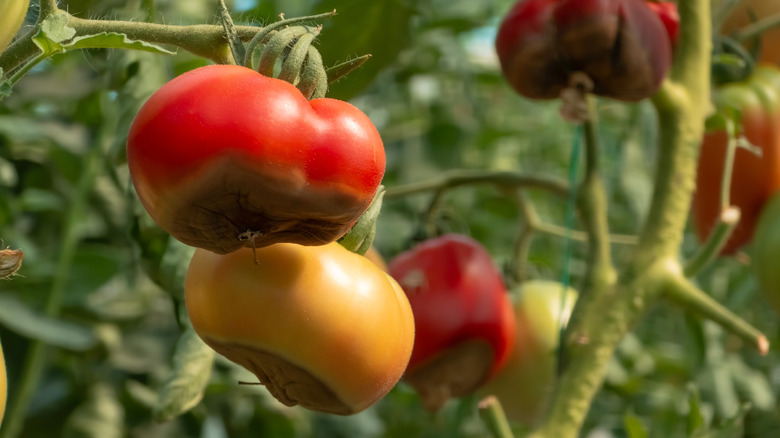Warning Signs That Your Plants Aren't Getting Enough Calcium
With careful observation, you might find that your plants are trying to tell you about a serious nutrient imbalance, and there are warning signs that you can look for if that's the case. If the leaves of your plants start to become misshapen or turn spotty brown around the edges, it's possible that there's a calcium deficiency at play. This often begins subtly, first showing up in new growth — those delicate leaves and root tips that depend on a constant supply of minerals to build robust cell walls. Because calcium is immobile in plants once absorbed, it affects younger tissues and growing points first, as these are the greatest distance from the root system.
For gardeners worried about a lack of magnesium in their soil, you can easily treat this nutrient deficiency in plants like a gardening pro with a little Epsom salt. But a calcium shortage isn't usually about what's missing from the soil — most soils contain enough of it. The problem is that the plant that is showing signs of something being wrong isn't taking in enough calcium, which is often caused by watering too inconsistently or weather that limits transpiration, such as high humidity. Transpiration occurs when a leaf's pores open and water is evaporated.
This lack of water stops calcium from flowing through the plant's tissues. In fruiting crops, it can lead to disorders like blossom-end rot. If you don't take care of these early abnormalities, they can spread swiftly, especially in fast-growing crops. As young tissues lose structural integrity, roots stall and growth becomes stunted, giving plants a bushy appearance.
How to identify and fix calcium deficiency in your garden
Calcium issues in plants show themselves in different ways. Apples may develop a bitter pit, which results in spongy, brown flesh. Blossom end rot causes dark, sunken lesions on fruit, affecting tomatoes and peppers. Cabbages and lettuces display tip burn, which can be observed when the leaf margins look like they've been "scorched". In some cases, leaves may appear torn or wrinkled, and their veins may turn brown. These necrotic leaves are typical indications of calcium deficiency.
There are several easy ways to add calcium to your soil for strong and thriving plants, but managing water is the first step in treating calcium shortage. Although you can start sprinkling eggshells around your tomato garden, supplementing the soil of your plants with additional minerals like this is not enough. Ensure that the soil your plants are in is consistently moist, since calcium circulates with water, and check the pH of the soil, since acidic conditions can reduce calcium absorption.
Severe cases of calcium deficiency (such as in apples with bitter pit or cork spot) may benefit from foliar sprays of calcium nitrate. But, for long-term prevention, remember that any calcium supplements you give your plants will only function if the roots are able to absorb it and move it through the plants with the use of water. So, before you start adding extra calcium, do a soil test to check whether there is a deficiency, or whether it's just a case of your plants not being able to absorb enough of it. If it's the latter, adjusting the soil pH (if necessary) and ensuring there's plenty of available moisture should alleviate the problem.

